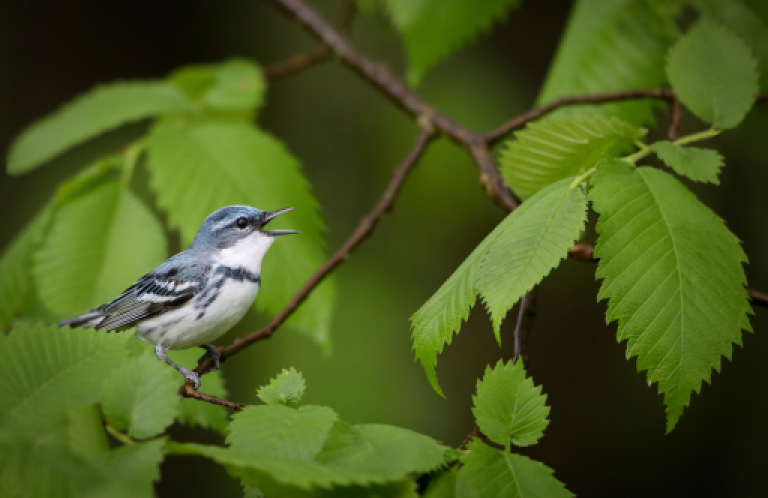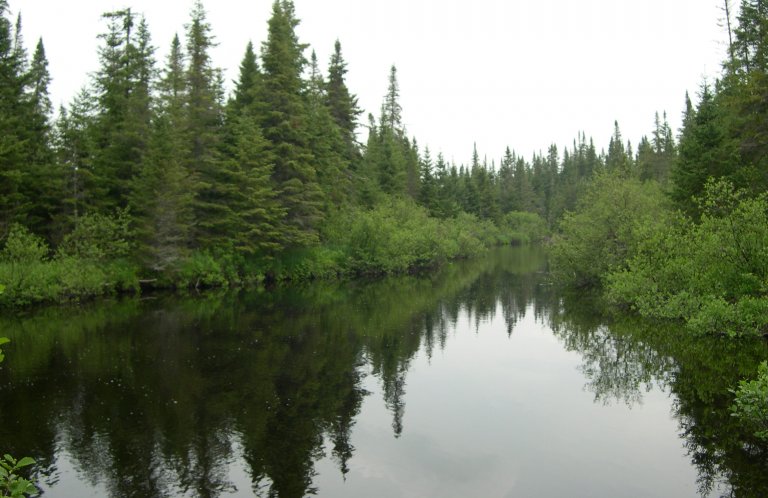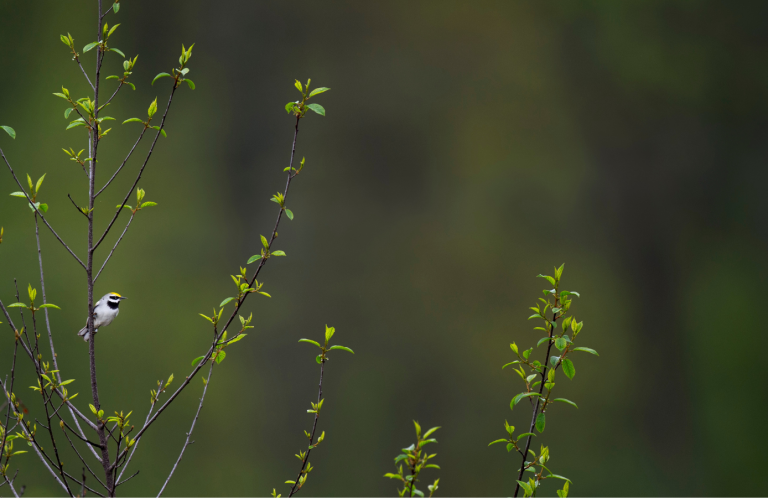Your “Treequently” Asked Questions, Answered
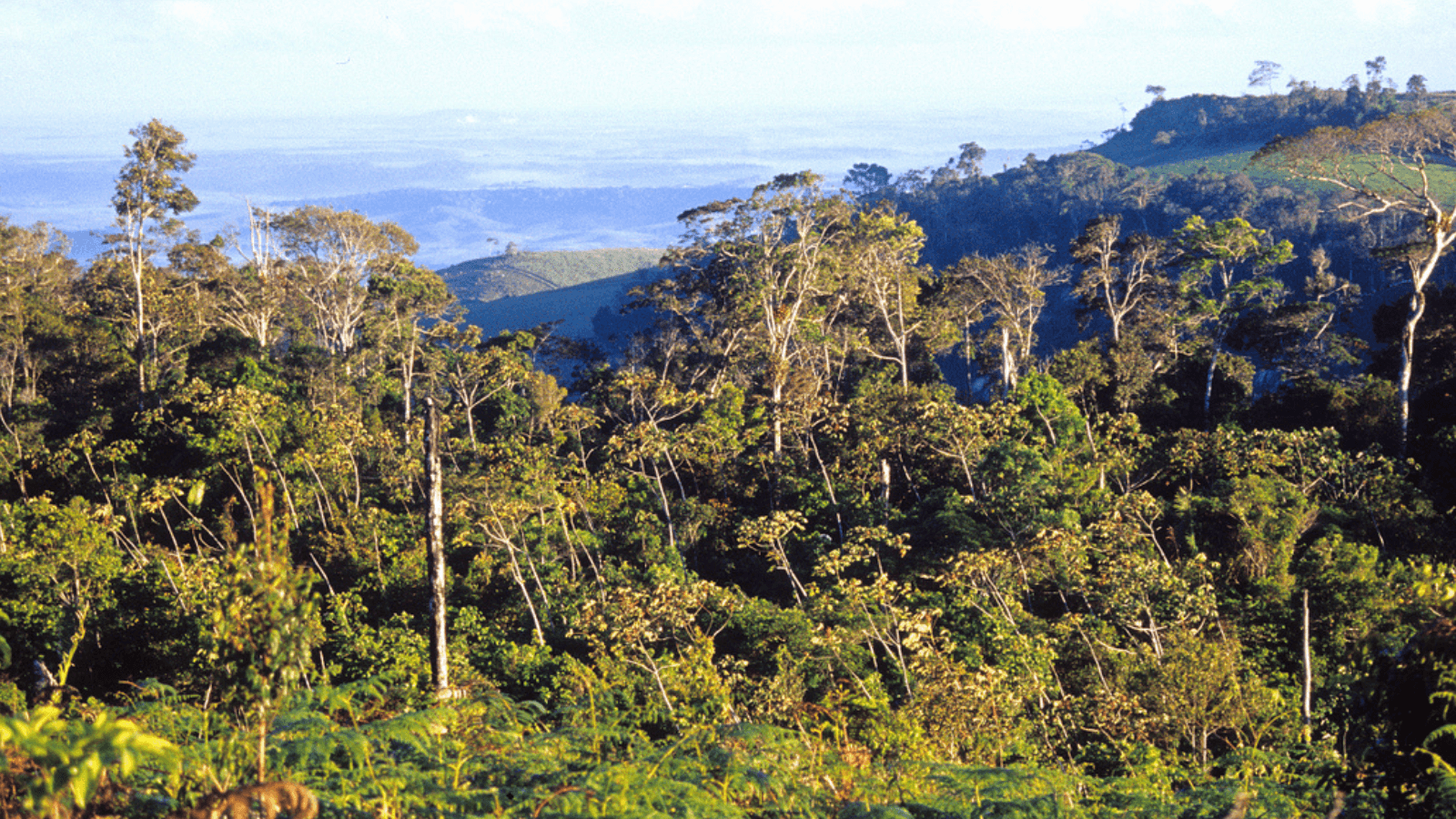
Birds face many challenges — collisions with windows, pesticides, and introduced species, to name only a few — but habitat loss stands out as the biggest threat to birds by far. While birds are found in every major habitat type around the world, forests of all kinds, from tropical rainforests to temperate and boreal forests, support more than 75 percent of all bird species.
By some estimates, we lose as many as 25 million acres (10 million hectares) of forest annually around the globe. (For reference, that's more than five Denali National Parks or a little less than the area of the state of Virginia!) Forests are cleared to make way for agriculture and cattle grazing, unsustainably logged, and felled for development.
Sometimes the issue isn't that the trees are gone, but that the quality of the forest has degraded. The trees may lack the diversity of ages and species preferred and even required by some birds. In many cases, people have interrupted natural processes, like periodic fires and floods, that can be beneficial for forests under some circumstances. These kinds of disturbances can create dynamic habitats with trees of different ages and host a variety of tree and plant species. To recreate the optimal conditions for certain habitats, forest managers sometimes have to do what most of us have been told no to do: cut down trees.
Timber harvesting isn't always bad — it's all about context! Harvesting timber as part of a sustainable forest management plan can improve habitat for birds and other wildlife. Many species such as the Wood Thrush and Golden-winged Warbler thrive when forests comprise a mix of trees at different ages, something that timber harvesting can provide. Selectively harvesting trees can open up a crowded canopy, letting light in to support the growth of plants at lower levels of the forest, which is great for birds like the Ruffed Grouse and American Woodcock. Let the Sun Shine In Indiana, an American Bird Conservancy (ABC) supported initiative, is just one example where this technique is helping to restore vital oak-hickory forests and provide healthier habitats for birds. Forests can be managed to be beneficial for both birds and people. In the Southeastern United States, working forests provide essential habitat to help the Swallow-tailed Kite rebound, while allowing for sustainable timber harvesting so companies like International Paper can produce the paper products we use every day.
Bringing back habitat, specifically high-quality habitat, is our best hope for stabilizing bird populations and preventing extinctions. That means employing a variety of management best practices to help forests and the birds within them thrive. For three decades, American Bird Conservancy (ABC) has focused our efforts on restoring and improving habitat and expanding habitat connectivity. Working with dozens of partners, as of May 2024, ABC has supported the planting of 7,725,412 trees across 27,535.36 acres throughout the Western Hemisphere to help bring back habitat that has been lost. This work also supports a growing forestry program to manage habitats to maximize what they can do for year-round species and migratory birds alike.
In this multi-story series, ABC's program staff are here to answer some of our most “treequently” asked questions. This story is not exhaustive — we could fill hundreds of pages about our work! — but it uses the relevant experiences of ABC's program staff to provide a snapshot of their work in forested habitats from Michigan to Peru.
Why is it important to plant trees? What species benefit, and how do they benefit?
Steve Roels is ABC's Kirtland's Warbler Program Director and Conservation Team Coordinator. The Kirtland's Warbler, a migratory species that breeds in Michigan, Wisconsin, and Ontario, was once on the endangered species list but was delisted in 2019 thanks to decades of conservation work that includes careful habitat management.
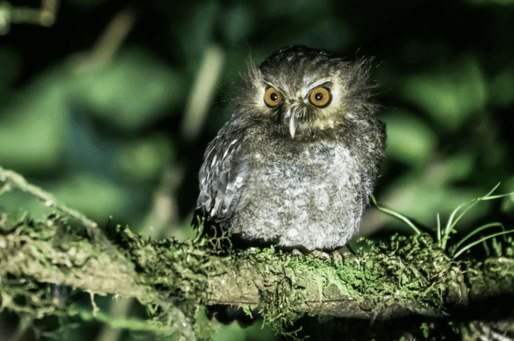
“Jack Pines are essential habitat for breeding Kirtland's Warblers in Michigan,” says Roels. “Wildfire formerly regenerated the Jack Pine forest and created the young forest habitat Kirtland's Warblers need, but now habitat is mostly created by planting Jack Pine seedlings following timber harvests.”
Judi Brown is the Coordinator for Let the Sun Shine In Indiana, a program that works to restore oak-hickory forests, which have more open canopies and tend to support a greater diversity of plants and birdlife. While some of Let the Sun Shine In's work involves using science-based tree harvests to improve existing forests, tree planting is also a major component.
“In southern Indiana, landowners are encouraged to plant trees along stream and creek edges, called ‘riparian areas,'” Brown says. “Landowners and farmers also plant trees in low-lying areas, where flooding damages the crops. Fertilizers are lost in floodwater and carried downstream where they negatively impact the water quality. The floodwaters also carry soil, the largest water contaminant by volume. Planting trees in riparian and low-lying areas improves soil stability: the tree roots, combined with roots of native grasses, sedges, and other plants, hold the soil in place and keep it out of the waterway. They also trap nitrogen and other contaminants, preventing them from entering the water.”
In ABC's BirdScapes in South America, tree planting helps to address the loss and degradation of habitat on the nonbreeding grounds of migratory species, which need high-quality habitat at both ends of their migratory journeys and at key points in between. As International Conservation Project Officer, Annie Hawkinson, shares, “We support tree-planting for shade coffee, silvipasture (integrating trees and grazing for cattle), living fences, and to restore degraded land in our Colán-Alto Mayo BirdScape in Peru. This work is funded by the Neotropical Migratory Bird Conservation Act (NMBCA) and thus far has helped plant 1,046,114 trees over 1,885 acres.”
The reforestation in Peru benefits many migratory species, including the Cerulean Warbler, Canada Warbler, Blackburnian Warbler, Olive-sided Flycatcher, Swainson's Thrush, Red-eyed Vireo, Summer Tanager, and Rose-breasted Grosbeak. Some of these species can be found in the breeding months or during migration in the forests in Indiana, where Let the Sun Shine In's work takes place. The added forest cover in Peru also helps endemic species such as the Vulnerable Long-whiskered Owlet and the Near Threatened Marvelous Spatuletail.
Who decides where to plant trees?
ABC has deep partnerships, and often partners on the ground make the calls on where to plant. Conservation is collaborative and can involve government agencies, nonprofit groups, volunteer networks, private and public landowners, and others. In Peru, ABC partner Asociación Ecosistemas Andinos (ECOAN) has helped Indigenous communities in coordinating the planting of native Polylepis trees. These tree plantings sometimes occur in formerly forested areas or areas that have experienced overgrazing from cattle.
As Roels says of the work in Michigan, “ABC doesn't plant trees for the Kirtland's Warbler, but we work with government agencies and NGOs that do. Trees are planted to create habitat in specially designated ‘Kirtland's Warbler Management Areas' on public lands. These areas have the right kind of soil where Jack Pine thrives and not many other trees do well.”
The types of trees planted also depend on the needs of the local communities, from firewood to agroforestry. ABC has supported the planting of 362,849 trees for shade coffee, 319,583 trees of varying kinds for silvipasture, 492,598 trees for living fences that help delineate property lines and join forest patches, and 319,073 trees for fuelwood plantations. These fuelwood plantations help ensure that trees in protected areas are safe from incursions.
What kinds of trees are being planted and why?
This answer depends on where in the world ABC is working, what the existing habitat is like, and what bird species are of particular conservation concern.
In Indiana, the oak-hickory forests that once dominated the landscape are now in decline and that poses problems for the birds that rely on them. Let the Sun Shine In focuses on what Brown calls “trees that don't mind getting their ‘feet' wet — Swamp White Oak, Burr Oak, Scarlet Oak, Bald Cypress, Pin Oak, Green Ash, among others.” All these species, especially the oaks, create a buffet of caterpillars for birds from the Northern Cardinal to the Yellow-billed Cuckoo. “Oak species are also underplanted in forest stands to encourage oak regeneration into the proper forest ecosystems,” says Brown. “Walnuts and other crop trees are started by planting former crop and hay fields in plantations to begin to reforest an area.”
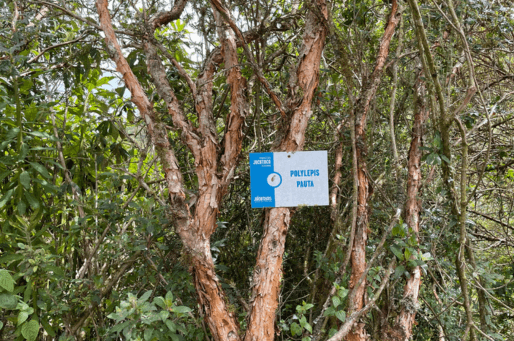
Kirtland's Warblers are discerning. “They only nest in dense stands of Jack Pine from 5 – 20 years of age,” says Roels. “Interestingly, the warbler doesn't even nest in the trees, but on the ground underneath the low-hanging branches, which protect the nest.” Kirtland's Warblers have been known to breed in Red Pine stands, which have a higher timber value than Jack Pine when they are harvested decades after the warbler is done using them (recall that timber harvesting helps keep forest ages in the range preferred by the birds). “Red Pine is also being planted experimentally in some Kirtland's Warbler habitat projects. Jack Pine is the best habitat, but ongoing research will help us understand if we can have some Red Pine in the mix to generate more revenue for habitat management,” Roels mentions.
In Peru, much of the work focuses on reforesting native Polylepis trees, members of the rose family and the highest-growing flowering trees found anywhere on Earth. They can grow at elevations as high as 16,400 feet (5,000 meters) above sea level. While once abundant, Polylepis trees cover only about 3 percent of their former range. Overgrazing by cattle, burning to clear land, and firewood harvesting have taken a toll on these spectacular trees that have moss-covered branches and twisted trunks. Reforesting with Polylepis trees is important for the Critically Endangered Royal Cinclodes and many other endemic species.
Are the trees that are planted always native species?
As Brown says, “Native species are adapted to live on the soils in the area and need to receive the correct amount of sunshine and rainfall. Wildlife depend on the native species for their food and shelter sources. If the ecosystems are not maintained, the wildlife, especially our bird species, will not thrive. Non-native plants do not provide the correct food for wildlife. If they become invasive, they crowd out the native plant species, damage the soil, and reduce the native wildlife populations in the area.”
The relationships between birds and plants can be very intricate. Hummingbirds, for example, have bills tailored to the shape and depth of the flowers they visit for food. The hummingbirds also pollinate those flowers. A Brown Creeper is difficult to spot as it works its way up the trunk of a towering conifer, its camouflage providing protection from predators. For Kirtland's Warblers, the Jack Pine where they nest also provides their preferred snack: Jack Pine Budworm caterpillars. ABC has supported the planting of 3,844,889 native trees throughout the Western Hemisphere.
While native plants are the way to go a majority of the time, especially when it comes to our own backyard gardens, there are times when non-native species fit the bill. Non-native trees can include certain fruit trees, coffee, cacao, and other crops for agroforestry systems that can often be integrated with native plants to provide high-quality habitat for birds. Bird-friendly approaches can simultaneously support local communities by providing sources of income while improving the land.
Who is involved in planting trees, and who takes care of them once they're planted?
Tree plantings can be major community events! In Peru, ABC partner ECOAN manages reforestation efforts in many departments. With more than 20 years of experience, ECOAN staff are experts not only in constructing nurseries and propagating trees but also in cultivating good relationships and engaging local communities. Community members take part in tree plantings as volunteers and hired workers.
Community members in Peru benefit in other ways, too. “Fruiting trees are given to them as incentives for participating. This increases the number of trees around the communities and towns where reforestation is taking place while also providing people with a free, sustainable food source,” says Hawkinson. “Communities also benefit from reforestation because trees are essential in erosion control and watershed protection, and function as a shield to crops from inclement weather. These trees improve soil quality and nutrition.”
In Michigan, land management agencies like the United States Forest Service and the Michigan Department of Natural Resources are involved in planting trees, but a volunteer-driven Jack Pine Planting Day led by an ABC partner, the Kirtland's Warbler Alliance, helps get people involved, too.
Jack Pine isn't just good for Kirtland's Warblers. “Jack Pine planting creates habitat for many wildlife species. … Other migratory birds like Upland Sandpiper and Clay-colored Sparrow use young Jack Pine plantations, although they generally move out before the Kirtland's Warbler moves in, as part of the bird habitat succession ‘merry-go-round.' After Jack Pines become too mature for the Kirtland's Warbler, other species move in, including Spruce Grouse,” says Roels. “All these species, but especially the Kirtland's Warbler, support an ecotourism economy in the northern Lower Peninsula of Michigan. Last year, I even bumped into a birding tour from Europe that came to Michigan just to see Kirtland's Warblers!”
When tree planting takes place on private lands as part of Let the Sun Shine In's work in Indiana, Brown encourages landowners to work with their local foresters. “Landowners hire consultants to plant the trees, or they plant them themselves. In large plantations, they rely on the weather conditions. If pruning is needed, the landowners handle it.”
What's the difference between a tree and a shrub in your work and why does it matter?
In general, trees and shrubs can be differentiated by their stems: trees have one large stem (the trunk), while shrubs can have many. Trees also tend to grow taller and have one crown, while shrubs are typically shorter.
But for the Kirtland's Warbler, the distinction between a tree and a shrub is more nuanced. As Roels says, “There are several important shrubs in Kirtland's Warbler breeding habitat, especially Lowbush Blueberry. Kirtland's Warblers often place their nests inside or under dense blueberry bushes and the fruit is an important food source in the late summer. The blueberry never grows very tall, so it does not compete for light with young Jack Pines and makes excellent ground cover underneath them.”
Where does the money for tree planting come from? Do all donations to ABC support tree planting? What about ABC membership?
Not all donations result in tree plantings. ABC often runs specific campaigns to support tree planting. If you have ever donated to a “Plant a Tree, Conserve an Acre” campaign or a similar campaign, your gift has directly helped put a tree (or trees) in the ground.
ABC Memberships support all of the work we do across the organization. While money from memberships does not directly go to planting trees, it does allow us to do a good deal of the work associated with the tree program. Membership dollars are part of ABC's general operating fund, used to cover day-to-day operating expenses, which include supporting the staff working to get conservation results for birds.
We'll Leaf It There … For Now
There's no shortage of questions about trees and all of ABC's work, so we will be back soon with another installment of our “Treequently” Asked Questions. Next time, we will take a deeper dive into ABC's forestry work and share how managing habitats for bird conservation often means much more than planting trees, how working forests can be beneficial to birds and people, and more.






































